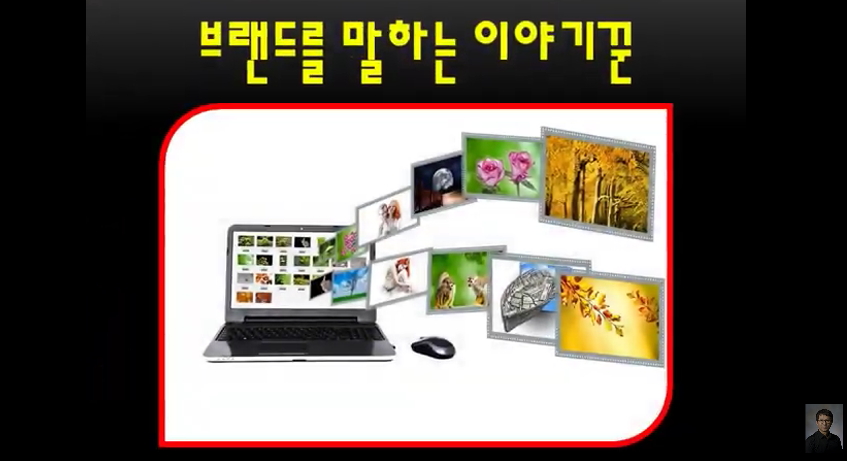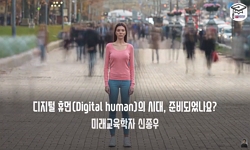The ‘point’ has been mainly studied in terms of its use and method of expression as a physical element of a structure. In the current age of digital mediums, there is a need to understand the ‘point’ beyond a physical element. The ‘point’ ...
http://chineseinput.net/에서 pinyin(병음)방식으로 중국어를 변환할 수 있습니다.
변환된 중국어를 복사하여 사용하시면 됩니다.
- 中文 을 입력하시려면 zhongwen을 입력하시고 space를누르시면됩니다.
- 北京 을 입력하시려면 beijing을 입력하시고 space를 누르시면 됩니다.

디지털 환경에서의 시각 재현 요소로서의 점에 관한 연구 = A Study on Point as a Visual Representation Factor in Digital Environment
한글로보기https://www.riss.kr/link?id=A103795805
- 저자
- 발행기관
- 학술지명
- 권호사항
-
발행연도
2012
-
작성언어
Korean
- 주제어
-
등재정보
KCI등재
-
자료형태
학술저널
- 발행기관 URL
-
수록면
113-124(12쪽)
-
KCI 피인용횟수
2
- 제공처
-
0
상세조회 -
0
다운로드
부가정보
다국어 초록 (Multilingual Abstract)
The ‘point’ does not merely exist within a canvas but also in various mediums, and thus gives rise to a need to redefine it from a comprehensive perspective for teaching design and for the spectrum of art/design activities in the digital era.
This study investigates the various meanings and definitions of the ‘point’ as the minimum unit in the structure of an image as a visual mimesis and representative element in order to redefine it for the digital environment from its existing understanding as a element of art and design.
In this sense, the ‘point’ is the minimum unit for mimesis and the representation of thinking between the existing and the imagined, and is a material and, at the same time, a tool which allows the subject to weave the two worlds together into one.
This study concludes that the ‘point’ is an element of mixed media which can be interpreted by composite code, whose meaning becomes lucid when used as a unit for composite communication.
The understanding of roles and concepts of the ‘point’ in especially the fundamental art and design education of digital era will assist in bringing out new creative methods in representing the artist’s intentions through the simultaneous utilization of the existing and the imagined.
The ‘point’ has been mainly studied in terms of its use and method of expression as a physical element of a structure. In the current age of digital mediums, there is a need to understand the ‘point’ beyond a physical element.
The ‘point’ does not merely exist within a canvas but also in various mediums, and thus gives rise to a need to redefine it from a comprehensive perspective for teaching design and for the spectrum of art/design activities in the digital era.
This study investigates the various meanings and definitions of the ‘point’ as the minimum unit in the structure of an image as a visual mimesis and representative element in order to redefine it for the digital environment from its existing understanding as a element of art and design.
In this sense, the ‘point’ is the minimum unit for mimesis and the representation of thinking between the existing and the imagined, and is a material and, at the same time, a tool which allows the subject to weave the two worlds together into one.
This study concludes that the ‘point’ is an element of mixed media which can be interpreted by composite code, whose meaning becomes lucid when used as a unit for composite communication.
The understanding of roles and concepts of the ‘point’ in especially the fundamental art and design education of digital era will assist in bringing out new creative methods in representing the artist’s intentions through the simultaneous utilization of the existing and the imagined.
국문 초록 (Abstract)
본 연구는 조형 요소인 점의 개념을 디지털 환경에서 명확하게 되짚기 위하여 시각 재현요소로서 이미지 구성의 최소단위로서 점이 가지는 다양한 의미와 개념을 고찰하였다. 점은 재현을 위한 최소 단위로 자연과 정신의 이미지를 재현하고 실재와 가상의 세계를 주체의 재현목적을 위한 도구로 사용되며 두 세계를 서로 직조하듯이 엮어나가 하나의 세계로 구축할 수 있게 하는 재료이자 도구이다. 연구의 결과, 점은 복합적 코드로 해석 가능한 총합적 표현요소로 복합적 커뮤니케이션을 위한 단위로 사용될 때 그 의미가 분명해짐을 알 수가 있었으며 특히 디지털화 되어가는 디자인 조형 교육에 있어서도 기초과정에서 점의 이러한 역할과 개념에 대한 이해가 다루어진다면 가상과 현실을 동시에 사용하여 전달자의 의도를 나타내는데 보다 폭넓은 방법을 이끌어 낼 수가 있을 것으로 판단되었다.
점은 그동안 형태를 구성하는 물질적 요소로 그 표현의 방법이나 사용 등을 중심으로 연구되어왔다. 디지털 매체가 흔하게 사용되고 있는 시점에서 점은 더 이상 물질 중심의 요소로만 다루...
점은 그동안 형태를 구성하는 물질적 요소로 그 표현의 방법이나 사용 등을 중심으로 연구되어왔다. 디지털 매체가 흔하게 사용되고 있는 시점에서 점은 더 이상 물질 중심의 요소로만 다루어지는 것은 무리가 있다. 점은 캔버스 안에서만 존재하는 것이 아닌 다양한 매체에서 존재하기 때문에 디지털 시대의 디자인 교육과 조형 활동을 위해 종합적인 측면에서 개념의 재정립이 필요하다.
본 연구는 조형 요소인 점의 개념을 디지털 환경에서 명확하게 되짚기 위하여 시각 재현요소로서 이미지 구성의 최소단위로서 점이 가지는 다양한 의미와 개념을 고찰하였다. 점은 재현을 위한 최소 단위로 자연과 정신의 이미지를 재현하고 실재와 가상의 세계를 주체의 재현목적을 위한 도구로 사용되며 두 세계를 서로 직조하듯이 엮어나가 하나의 세계로 구축할 수 있게 하는 재료이자 도구이다. 연구의 결과, 점은 복합적 코드로 해석 가능한 총합적 표현요소로 복합적 커뮤니케이션을 위한 단위로 사용될 때 그 의미가 분명해짐을 알 수가 있었으며 특히 디지털화 되어가는 디자인 조형 교육에 있어서도 기초과정에서 점의 이러한 역할과 개념에 대한 이해가 다루어진다면 가상과 현실을 동시에 사용하여 전달자의 의도를 나타내는데 보다 폭넓은 방법을 이끌어 낼 수가 있을 것으로 판단되었다.
참고문헌 (Reference)
1 서우선, "형식 창조론'에 나타난 모방론" 민족음악학회 3 : 1992
2 고위공, "텍스트와 형상" 미술문화 2005
3 김휘택, "텍스트 커뮤니케이션 - 리쾨르의 삼중의 미메시스(triple mimèsis)를 중심으로 -" 프랑스문화예술학회 23 : 111-143, 2008
4 최성호, "제논의 화살 논변과 러셀" 한국분석철학회 (12) : 21-46, 2005
5 Wassily Kandinsky, "점․선․면" 열화당 1993
6 Rudolf Arnheim, "예술과 엔트로피" 눈빛 1995
7 임태승, "아이콘과 코드" 미술문화 2006
8 임산, "아이코놀로지" 시지락 2005
9 Aristoteles, "시학" 문예출판사 2011
10 Paul Ricoeur, "시간과 이야기1" 문학과지성사 2008
1 서우선, "형식 창조론'에 나타난 모방론" 민족음악학회 3 : 1992
2 고위공, "텍스트와 형상" 미술문화 2005
3 김휘택, "텍스트 커뮤니케이션 - 리쾨르의 삼중의 미메시스(triple mimèsis)를 중심으로 -" 프랑스문화예술학회 23 : 111-143, 2008
4 최성호, "제논의 화살 논변과 러셀" 한국분석철학회 (12) : 21-46, 2005
5 Wassily Kandinsky, "점․선․면" 열화당 1993
6 Rudolf Arnheim, "예술과 엔트로피" 눈빛 1995
7 임태승, "아이콘과 코드" 미술문화 2006
8 임산, "아이코놀로지" 시지락 2005
9 Aristoteles, "시학" 문예출판사 2011
10 Paul Ricoeur, "시간과 이야기1" 문학과지성사 2008
11 강대원, "미적분학의 극한개념에 대한 역사적 고찰" 순천대학교 대학원 2010
12 조정아, "디지털 시대 문해의 교육적 함의" 이화여자대학교 대학원 2010
13 Charles Wallschlaeger, "디자인의 개념과 원리" 안그라픽스 1998
14 유은복, "'시공간'개념으로 본 사진적 주체의 근대성 : 데카르트(뉴튼)의 절대적 시간, 공간과 아인쉬타인의 상대적 '시공간'을 비교하여" 홍익대학교 대학원 2000
동일학술지(권/호) 다른 논문
-
도시 가로 활성화를 위한 미디어 파사드 형태구성에 관한 연구
- 한국기초조형학회
- 최보람
- 2012
- KCI등재
-
구도심 활성화를 위한 지속가능한 공공디자인 -부산광역시를 중심으로-
- 한국기초조형학회
- 이홍
- 2012
- KCI등재
-
패션디자인에 나타난 오브제 투르베(object trouve)의 표현 양상에 관한 연구
- 한국기초조형학회
- 김유경
- 2012
- KCI등재
-
- 한국기초조형학회
- 김인숙
- 2012
- KCI등재
분석정보
인용정보 인용지수 설명보기
학술지 이력
| 연월일 | 이력구분 | 이력상세 | 등재구분 |
|---|---|---|---|
| 2027 | 평가예정 | 재인증평가 신청대상 (재인증) | |
| 2021-01-01 | 평가 | 등재학술지 유지 (재인증) |  |
| 2018-01-01 | 평가 | 등재학술지 유지 (등재유지) |  |
| 2015-02-09 | 학술지명변경 | 외국어명 : Bulletin of Korean Society of Basic Design & Art -> Journal of Basic Design & Art |  |
| 2015-01-01 | 평가 | 등재학술지 유지 (등재유지) |  |
| 2011-01-01 | 평가 | 등재학술지 유지 (등재유지) |  |
| 2009-01-01 | 평가 | 등재학술지 유지 (등재유지) |  |
| 2006-01-01 | 평가 | 등재학술지 선정 (등재후보2차) |  |
| 2005-01-01 | 평가 | 등재후보 1차 PASS (등재후보1차) |  |
| 2003-01-01 | 평가 | 등재후보학술지 선정 (신규평가) |  |
학술지 인용정보
| 기준연도 | WOS-KCI 통합IF(2년) | KCIF(2년) | KCIF(3년) |
|---|---|---|---|
| 2016 | 0.33 | 0.33 | 0.34 |
| KCIF(4년) | KCIF(5년) | 중심성지수(3년) | 즉시성지수 |
| 0.34 | 0.34 | 0.512 | 0.08 |




 KCI
KCI DBpia
DBpia






